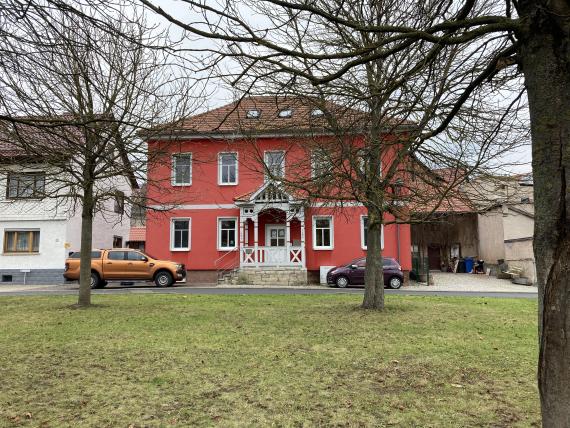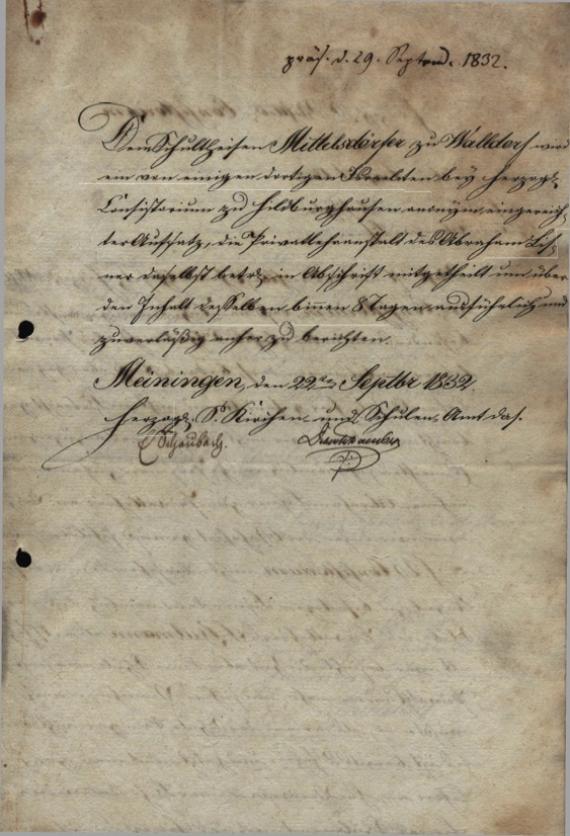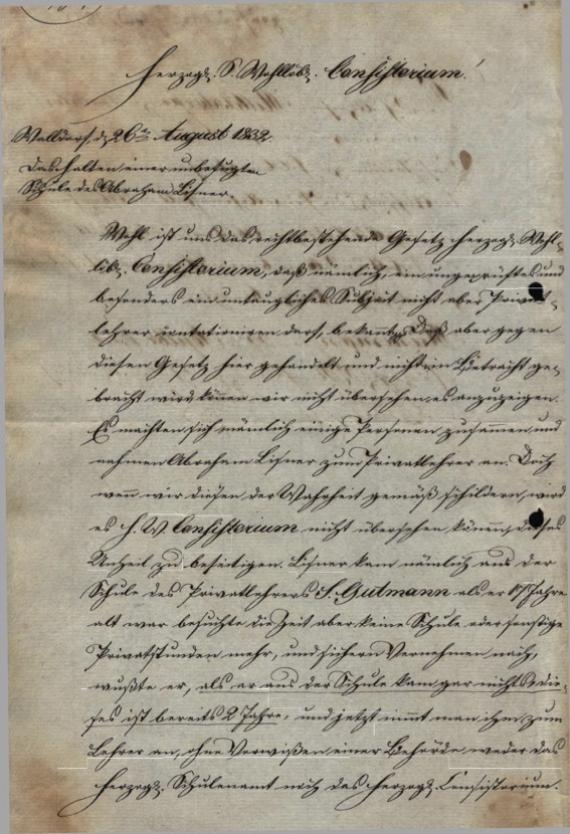Freierplatz 4
98639 Walldorf
Germany
At the end of the 18th century, Jewish reformers began to criticize the low level of schooling and the lack of teaching methods in Jewish education, which mostly took place in the private homes of the prayer leaders and shepherds. In order to raise the educational level of the Jewish population, new educational models developed in the transition from the 18th and 19th centuries, which led to the establishment of Jewish elementary schools and the expansion of the canon of subjects, including in Walldorf.
.Walldorf belonged to the Duchy of Saxe-Meiningen and at that time had the largest Jewish community in the entire Duchy. After a synagogue was already built and a Jewish cemetery existed at the end of the 18th century, a public Jewish school was added in 1824. It was the first one in the duchy. It was destroyed in a fire in 1836 and a new school was put into operation from 1840. However, Walldorf was not the only place with a public Jewish school in the 19th century . In 1839 there were a total of 9 Jewish schools in the duchy, attended by 232 children (36 boys and 136 girls). Furthermore, there were other private school institutions in Walldorf as well, but they were merged with the Jewish school from the 1850s.
With the founding of the German Empire, at the end of the 19th century the idea prevailed that a separate Jewish education system would stand in the way of the integration of Jews into German society. For this reason most Jewish schools were merged with the Christian schools of the respective towns under the Volksschulgesetz of 1875. Only Jewish religious instruction was allowed to take place in the former Jewish educational institutions if there was no place for it in the Christian schools. This was also the case with the Jewish school in Walldorf, where only Jewish religious instruction took place until 1909.






Add new comment